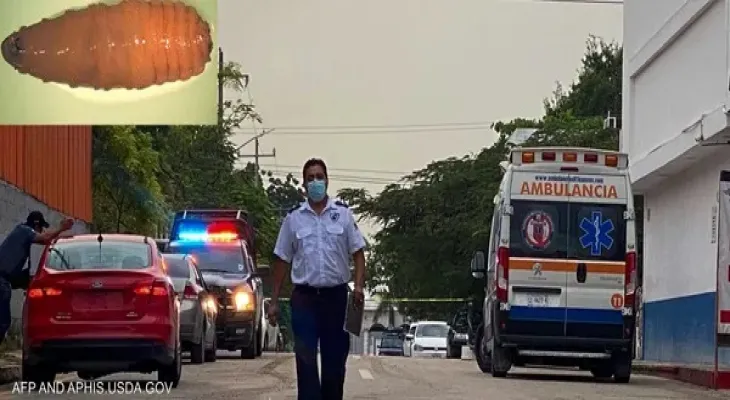Search here
Newspaper
Search here

Arab Canada News
News

Published: April 19, 2025
Mexico City – Arab Canada News
The Mexican Ministry of Health announced on Friday the registration of the first confirmed human case of cutaneous myiasis caused by the "screwworm" fly, a flesh-eating parasite that poses a serious threat to both humans and animals.
According to an official statement, the infection pertains to a 77-year-old woman from the town of Acacoyagua in the southern state of Chiapas, noting that her condition is stable and she is undergoing antibiotic treatment.
What is myiasis?
Myiasis is a serious parasitic skin infection that occurs when larvae of certain fly species invade open wounds or skin tissues, where they begin to feed on living tissues. The screwworm fly is specifically known for its ability to cause widespread tissue damage, which earns it the description of a "flesh-eating" parasite, and severe infections may lead to death if not addressed with early medical intervention.
Although there is no specific treatment for the screwworm, doctors rely on antibiotics and surgeries to remove the larvae to treat patients, while the spread is managed through biological control programs that involve sterilizing the flies to prevent them from breeding.
The disease resurfaces in the Americas
This case marks the first human infection recorded in Mexico in decades, as international health reports confirm that the screwworm fly has returned to spread in the Americas after years of intensive efforts to control it.
According to data from the U.S. Department of Agriculture, there has been an increase in cases since 2023, starting from Panama and extending north to Costa Rica, Nicaragua, Honduras, Guatemala, and recently Mexico. The department warned that the parasite "may start to return again to areas that have been free of it for decades."
A threat to humans and livestock
This parasite represents a dual threat; it not only endangers human health but also poses a significant economic burden on the livestock sector. Between the 1930s and 1950s, livestock producers in the southern United States were losing over $100 million annually due to screwworm infections.
Thanks to fly sterilization campaigns and the creation of an "environmental barrier" along the U.S.-Mexico border in the 1960s, the parasite was effectively eliminated from Mexico by 1986, but it continued to appear in South American countries and the Caribbean, recently returning amid weakened preventive measures.
Calls for monitoring and awareness
Mexican health authorities have called for stricter veterinary oversight and increased awareness campaigns among the population, especially in rural areas with high livestock density, stressing that they are closely monitoring the situation to ensure that the individual infection does not turn into a wider outbreak.
This development serves as a health alert for the entire region, particularly given the continuous movement of people and livestock across borders, necessitating a regional mobilization to prevent the spread of this dangerous parasite in the rest of North America.
Comments